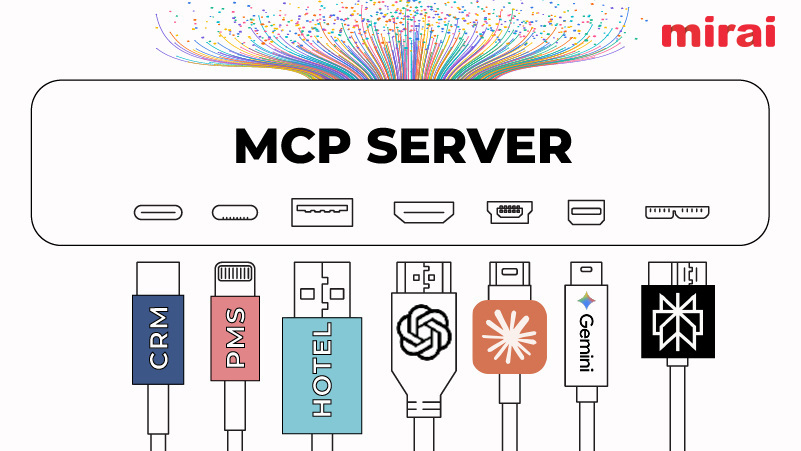The effectiveness of your hotel’s distribution strategy has a direct impact on both top-line revenues and bottom-line profitability, so it’s often helpful to return to the fundamentals and review hotel distribution from the ground up.
NB: This is an article from Cendyn, one of our Expert Partners
Mastering hotel distribution is a critical skill for revenue managers, who rely on both pricing strategy and inventory allocation to achieve their business objectives. Marketers should also pay close attention to distribution, as when and how guests see your hotel influences how responsive they are to specific campaigns.
Subscribe to our weekly newsletter and stay up to date
The ideal situation is to only allocate inventory to channels that consistently produce profitable bookings at high volume. Of course, distribution is rarely as straightforward as that. A hotel must constantly balance the need to put heads in beds to cover basic operating costs and the mandate to maintain a profitable operation.
Before reading on, download our quick guide which will serve as a tool in finding the right distribution mix for your hotel. This resource clearly highlights the differences between each inventory channel, including their unique benefits and challenges.
Types of channels
To put your hotel inventory in front of the right guests, you have several channels at your disposal:
Brand.com
This is when guests “book direct” on your hotel website. Direct bookings are often seen as the most valuable, as there is no additional cost paid to intermediaries. They also allow your hotel to offer added value packages and ancillary products at the pre-arrival stage, which is not possible on third party channels. Successfully converting lookers to bookers requires a modern website with an integrated booking engine.
OTAs
Online travel agencies originally emerged in the market to simplify the travel purchasing process. They help users find and book travel and take a cut of the booking. Today, they remain a dominant force in how many people book hotels, often contributing more reservations than brand.com. These sites aren’t only for leisure anymore; most major OTAs have robust business travel arms that support self-service for corporate travel.
Metasearch
This is a “channel of channels” that searches multiple travel websites, suppliers and brand.com hotel websites for a given search, and then sends the user to book on one of those sites. The primary revenue model here is advertising, rather than booking commission. Metasearch can represent an opportunity to drive potential customers to brand.com rather than third-party sites early in the search process.
Travel agents
Hands-on travel agents assist with a variety of trip types, from once-in-a-lifetime cruises to weddings, conferences, honeymoons, and managed corporate travel. These agents often offer added value, such as on-property perks, to their travelers — and often bring quality, high-value guests to hotels. Travel Management Companies influence and direct significant corporate spend on accommodation and travel for their clients, and selection and participation in their hotel programs can make all the difference in share of wallet.
Wholesalers
While this channel has fallen out of favor over the years due to the high margins involved, it still remains an important channel for some properties. Wholesalers commit to purchasing a block of rooms for a set price and then go about reselling those rooms at a profit, primarily to online and offline travel agencies. Even at a discount to public rates, the hotel gets guaranteed bookings without having to market to individual guests, groups, or event organizers.
Channel mix
To achieve optimal distribution, a hotel must evaluate the costs, profitability, and performance of each channel, based on specific business goals and target customer segments.
The correct distribution mix is always a balance between channels that are high producing — but perhaps lower profit — and those that are higher profit — but perhaps with inconsistent demand. The mix must also be adjusted in real time, as some channels will outperform on certain days of the week, seasons, or market conditions.
A few things that influence the distribution mix:
- Guest profile
A hotel’s ideal distribution mix depends on its target demographics. For example, an all-inclusive beach resort will find success with different distribution tactics to those of a casino hotel in Las Vegas. By segmenting distribution alongside demographics, you can more effectively match inventory to guests. - Seasonality and demand
Periods of naturally high demand require different inventory allocation tactics than off-peak times. The best example is pulling inventory from discounted last-minute channels during a hotel’s busiest times – whether that’s weekends, holidays or summers. Inventory should never be present on discount channels when business is booming. - Market conditions
The pandemic is the perfect example of how market conditions can influence distribution mix. With fluctuating travel regulations, hotels had to quickly shift inventory to regional channels that align with the latest restrictions. Moving beyond the pandemic, the channel mix must also consider things like massive local events and business travel trends.
The ideal distribution mix depends on a variety of factors, including a hotel’s category, the time of year, macrotrends in global travel patterns and local market conditions, such as compression due to a big event.
Profitability
Allocating rooms to the most profitable channels requires a strategic approach that relies on real-time data to frequently adjust allocations. There are two ways to evaluate profitability: on a per-channel basis or per booking basis.
- Per-channel
With robust business intelligence tools, evaluating profitability on a per-channel basis is a straightforward task. Otherwise, it takes a bit of calculation. To determine profitability at the channel level, take the total revenue generated by a specific channel and subtract the total cost of generating those bookings. This gives you the gross profit per channel. - Per booking
Business intelligence tools can get even more granular, looking at the profitability of individual bookings. This profitability metric can refine channel mix to allocate inventory towards specific segments on a per-channel basis to fully maximize profitability.
At more advanced stages, you can elevate your visibility into profitability by pulling in data from other parts of the hotel operation. For instance, once you know the actual cost of putting someone in a room, you can determine the net profit that a specific booking brings to your hotel — and can then also layer in non-room revenue to really finetune your distribution strategy.
Profitability can be measured per-channel or per booking, which is an important way to evaluate the effectiveness of your hotel distribution strategy.
Audits
Regular channel audits are an essential piece of maintaining an optimal channel mix— and thus an effective distribution strategy. Monitoring each channel’s revenue and profitability ensures that inventory allocations will be reduced for poorly performing channels.
Another objective of these audits is to evaluate the performance of your distribution decisions based on a deeper understanding of your guests so that you can allocate inventory accordingly. A boutique hotel will have a very different distribution mix than a mountain resort. Analyze your reservation data to only add providers that put your hotel in front of the ideal guests — and increase your profitability.
When it comes to profitability, proactive auditing is the only way to stay on top of your hotel’s distribution performance.
Continuous improvement in a dynamic world
The hotel distribution landscape is as dynamic as ever. Success in this ever-changing environment requires responsiveness and swift action. Inventory allocations and pricing adjustments should be made in real time, based on the latest data.
As travelers continue to research, engage and book across multiple channels, it’s imperative to use data for continuous improvement. To enhance distribution efficacy, proactively respond to data by adjusting inventory allocated per channel to maintain optimal ROI. It’s that proactive approach that makes distribution management a fundamental part of revenue strategy.





